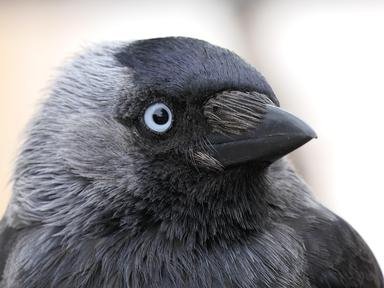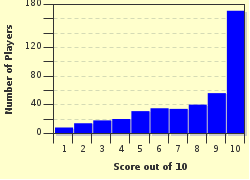Quiz Answer Key and Fun Facts
1. Larus ridibundus. A common black and white bird ranging over most of Europe and Asia, this bird can often be seen scavenging in landfill sites but also feeds on a wide range of insects and invertebrates. Only the summer adult has the distinctive black head. The female lays 2 to 6 greenish-blue eggs in April in a shallow scrape on the ground.
2. Tyto alba. A silent but deadly hunter of rodents in open fields, this white-breasted bird with buff upperparts is the most widely distributed member of the family. It is found on every continent except Antarctica. The female will lay 4 to 7 white eggs in buildings or holes in trees.
3. Carduelis chloris. Here is a common bird of parks, gardens and farmland. This distinctive small passerine is named for its colour. Feeding mainly on seeds, they nest in trees and bushes with the female laying 3 to 8 black speckled beige eggs.
4. Ardea cinerea. A large and ungainly grey wader, this bird will eat almost anything that moves. Its diet includes small fish, frogs, small mammals and other birds. It breeds in colonies in trees next to lakes, with the female laying anything from 2 to 7 pale blue eggs. The chicks are very noisy, making a constant "clacking" sound with their beaks.
5. Picoides minor. This species is another black and white bird that is more often heard than seen. When it is visible, its red cap is a giveaway for identification. It feeds on insects, and nests high up, usually in dead trees which it hollows out. The female lays 5 to 8 brilliant white eggs and both adults help to raise the brood.
6. Erithacus rubecula. Voted Britain's favourite bird and synonymous with Christmas. Both sexes are identical in plumage. They are omnivorous and can be found in woodlands, hedgerows, parks and gardens. Nests are built in any safe nook, where the female lays up to 9 blue eggs with reddish spots.
7. Recurvirostra avosetta. I couldn't do a quiz on British birds without including this one. The symbol of the Royal Society for the Protection of Birds, it is an uncommon but distinctive bird with black and white plumage and a black upturned bill.
8. Cuculus canorus. This species is another of our well known summer visitors that is more often heard than seen. It is Britain's only parasitic bird, with the female laying a single egg in the nests of an unfortunate reed warbler or meadow pipit.
9. Delichon urbica. This bird is another summer migrant and similar to a swallow, identification is relatively simple by the distinctive white rump visible in flight. They spend most of their time on the wing catching insects. Nests are built of mud in colonies (often under the eaves of houses) and will usually contain up to 5 white eggs. 2 or even 3 broods a year are raised.
10. Troglodytes troglodytes. Another unmistakable bird, but again more often heard than seen. A tiny brown dynamo, this bird is constantly on the move through the undergrowth. When threatened it issues a long harsh scolding call that is remarkably loud for its size.
Source: Author
mikew41
This quiz was reviewed by FunTrivia editor
crisw before going online.
Any errors found in FunTrivia content are routinely corrected through our feedback system.

